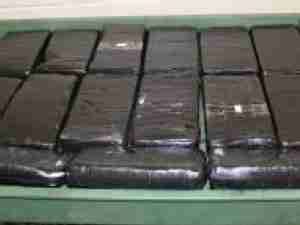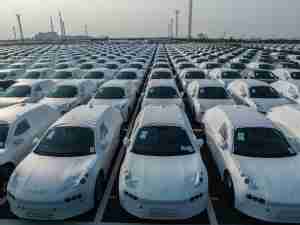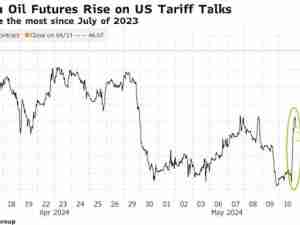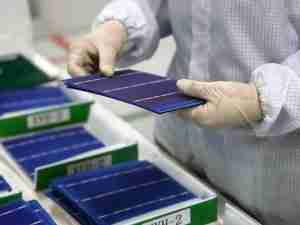The trade data issued laid bare trends at the heart of Beijing's debate about how to handle U.S. pressure for a higher yuan while seeking to protect both export-driven jobs and tame inflationary pressures.
Moments after the data was released, a deputy chief of China's customs agency staked out one position in that debate, saying a higher yuan is already hurting exports.
"The rise in the renminbi exchange rate may limit the room for export growth," Lu Peijun, the deputy head of the Chinese customs administration, said at a news conference about the data. The renminbi is another name for the yuan.
"China is still facing relatively big imported inflationary pressure and trade conditions are also deteriorating," said Lu.
Many traders are already wagering Beijing will tighten its leash on the yuan, which fell against the dollar on Thursday after the central bank set a sharply weaker mid-point for daily trading. Forwards markets are pricing in depreciation of the currency in the year ahead.
But other influential Chinese voices, including an official newspaper on Thursday, say Beijing may be preparing for a widening of the yuan's daily trading band to help fend off speculators and inflation.
September's trade surplus was smaller than August's $17.8 billion and less than half of the $31.5 billion recorded in July. The annual pace of exports to the troubled European Union more than halved from August.
"It is now certain that external demand is falling. Chinese export growth will continue to slow in the rest of the year," said Shi Lei, an analyst for Pingan Securities in Beijing, who said the figures were unlikely to prompt swift policy shifts.
China's annual inflation stood at 6.2 percent in August, and leaders have said taming price rises remains a priority.
"As falling external demand is expected by Chinese policymakers, any broad-based loosening of the monetary policy is unlikely in the short term until we see a clear fall in inflation," said Shi. "The window for possible policy easing is around November and December."
Both imports and exports were weaker than forecast by economists in a Reuters poll and several analysts said no rebound is in sight.
Exports rose 17.1 percent last month from a year ago, slowing from a 24.5 percent gain in August, and imports rose 20.9 percent, compared with August's 30.2 percent increase.
Still, the value of China's imports and exports are near record highs.
"The trade surplus is narrowing on a trend basis. I think this shows that the Chinese economy is (in the midst) of rebalancing," Jian Chang, an economist for Barclays in Hong Kong.
"Going forward, the effect of weakening external demand will slow export growth to mid- to lower teens. We expect import growth to hold up better."
Shdrinking Surplus
China's economic growth -- which has averaged around 10 percent for a decade -- has slowed this year as the global recovery from the credit crisis stumbled. Second-quarter growth of 9.5 percent was the weakest since late 2009.
Reflecting some concern about the slowdown, China on Wednesday unveiled measures to support cash-starved small businesses, which account for 75 percent of employment.
Still, if the world did slip into another full-blown economic crisis, China had the means to support its economy, said Anoop Singh, head of the IMF's Asia and Pacific department.
"I would say China has the scope to respond were these downside risks to materialise. What's important to notice is that even China's response would offset a part of the shock. It could not offset entire shock," Singh told a news conference.
A breakdown of China's trade numbers showed shipments of major export and import items slowed markedly.
Compared to August, annual growth in China's electronics exports









